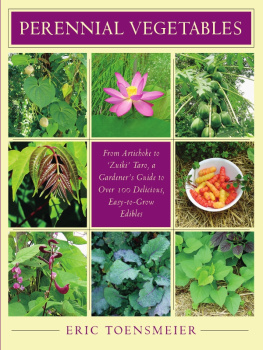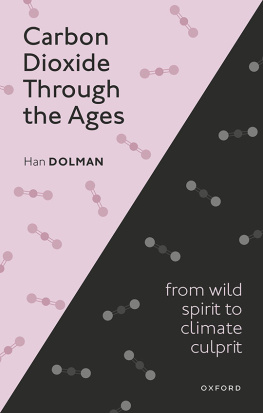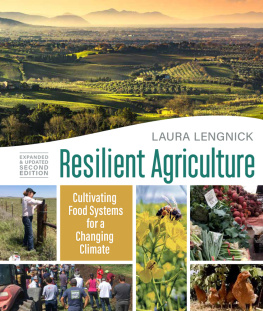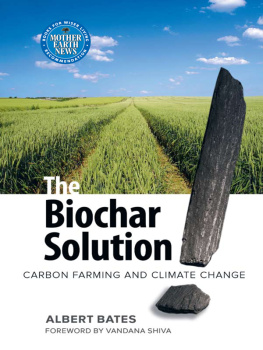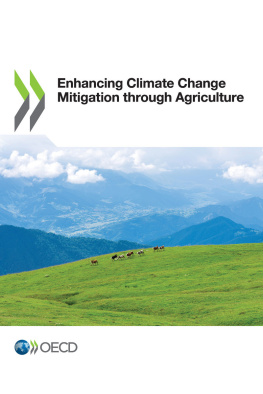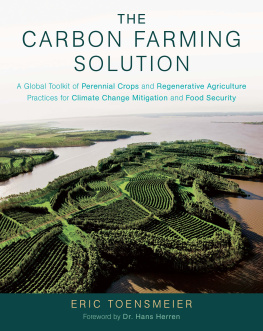Appendix A
Global Species Matrix
T ables like this are notoriously difficult to use efficiently. Electronic versions, more easily searchable, will be maintained at www.perennialsolutions.org, as will lists of species for each climate type.
Genus and Species reflect the Latin or scientific name of the crop. Common Name is only one of usually many names used. Where possible local language names from the region of origin are used. Family indicates the botanical family. All scientific names and families are up to date as of 2014 in line with the Kew Botanical Gardens website permits searching for outdated names.
Origin reports the region where the crop grows wild or where it is cultivated or was domesticated. Invasive indicates if the species is reported as listed by the Global Invasive Species Database..
Cultivation regards the level of domestication and active production of the species, as described in .
Staple Crop lists uses for the six categories described in .
Agroforestry Services and Fodder list agroforestry support and livestock fodder uses. Other Systems lists agroforestry and production systems the crop is reported to be used in.
Primary sources for this table include Mansfelds Encyclopedia of Agricultural and Horticultural Crops , P. K. Nairs Introduction to Agroforestry , the references from parts 3 and 4, and Daves Garden, a user-generated resource that proved remarkably helpful in determining cold-hardiness of many species.
Because these tables are too large for the ebook format, they can be found at www.ChelseaGreen.com/downloads/CFS-AppendixA.pdf.
Appendix B
Clean Dry Weight Yield Calculations
F or accurate comparisons of yield between perennial and annual staple crops, it is important to calculate first the edible portion (discounting shells, skins, pits, et cetera), then the dry weight (without water). This table shows the calculations used to provide the dry-weight data at the beginning of each staple crop chapter.
Annual crops are indicated by the presence of an asterisk next to the latin name.
Because these tables are too large for the ebook format, they can be found at www.ChelseaGreen.com/downloads/CFS-AppendixB.pdf.
Appendix C
Carbon Sequestration Rates
T his table illustrates the differences in annual rates of carbon sequestration between various practices. It is the basis for .
Because these tables are too large for the ebook format, they can be found at www.ChelseaGreen.com/downloads/CFS-AppendixC.pdf.
Appendix D
Changes in Latin Names
T he Latin names and families in this book are up to date in accordance with Kew Botanical Gardens The Plant List: A Working List of All Plant Species (theplantlist.org) as of 2014. Because botanical nomenclature sometimes changes due to developments in our understanding of taxonomy, Ive included a list of species that have changed in the last 5 to 10 years for reference.
Previous Latin Name | Current Latin Name |
Agave angustifolia | Agave vivipara |
Aleurites fordii | Vernicia fordii |
Aleurites montanus | Vernicia montana |
Amphicarpaea edgeworthii | Amphicarpaea bracteata var. edgeworthii |
Amygdalus pedunculata | Prunus pedunculata |
Aristida pungens | Stipagrostis pungens |
Armeniaca mandschurica | Prunus armeniaca ssp. mandschurica |
Armeniaca pedunculata | Prunus pedunculata |
Armeniaca sibirica | Prunus sibirica |
Armeniaca vulgaris | Prunus armeniaca |
Bambusa atra | Neololeba atra |
Bromelia fastuosa | Bromelia pinguin |
Buchanania lanzan | Buchanania cochinchinensis |
Castanopsis sumatrana | Castanopsis inermis |
Cereus peruvianus | Cereus repandus |
Chamaecytisus palmensis | Cytisus proliferus |
Chamaecytisus proliferus | Cytisus proliferus |
Cinnamomum zeylanicum | Cinnamonum verum |
Cnidoscolus chayamansa | Cnidoscolus aconitifolius |
Copaifera copallifera | Guibourtia copallifera |
Dioscorea batatas | Dioscorea polystachya |
Dioscorea opposita | Dioscorea polystachya |
Dolichos lablab | Lablab purpureus |
Eucalyptus citriodora | Corymbia citriodora |
Euphorbia cerifera | Euphorbia antisyphilitica |
Fallopia japonica | Reynoutria japonica |
Furcraea humboldtiana | Furcraea acaulis |
Furcraea macrophylla | Furcraea hexapetala |
Garcinia tinctoria | Garcinia xanthochymus |
Gigantochloa pseudoarundinacea | Gigantochloa verticillata |
Grindelia camporum | Grindelia hirsutula |
Hippophae rhamnoides | Elaeagnus rhamnoides |
Jessenia bataua | Oenocarpus bataua |
Juglans sinensis | Juglans regia |
Lingnania chungii | Bambusa chungii |
Manihot glaziovii | Manihot carthaginensis ssp. glaziovii |
Maximiliana maripa | Attalea maripa |
Microlaena stipoides | Erharta stipoides |
Mimusops globosa | Manilkara bidentata |
Myrica cerifera | Morella cerifera |
Opuntia cochinellifera | Nopalea cochenillifera |
Orbignya speciosa | Attalea speciosa |
Phaseolus polyanthus | Phaseolus coccineus ssp. polyanthus |
Phyllostachys pubescens | Phyllostachys edulis |
Piliostigma thonningii | Bauhinia thonningii |
Prunus amygdalus | Prunus dulcis |
Pueraria lobata | Pueraria Montana var. lobata |
Quercus leucotrichophora | Quercus oblongata |
Rhus sylvestris | Toxicodendron sylvestre |
Rhus verniciflua | Toxicodendron vernicifluum |
Samanea saman | Albizia saman |
Sambucus mexicana | Sambucus canadensis |
Scirpus californicus var. tatora | Schoenoplectus californicus ssp. tatora |
Scirpus mucronatus | Schoenoplectiella mucronata |
Simarouba glauca | Simarouba amara |
Sophora japonica | Styphnolobium japonicum |
Sterculia urens | Firmiana simplex |
Tetracarpidium conophorum | Plukenetia conophora |
Thinopyrum intermedium | Elymus hispidus |
Yucca guatemalensis | Yucca gigantea |
Acknowledgments
I n 2008 I read Tim Flannerys Now or Never: Why We Must Act Now to End Climate Change and Create a Sustainable Future . Short and to the point, it was my personal wake-up call around climate change. I also realized that the perennial crops I had spent my adult life investigating (and cultivating) were a very promising potential solution that was not being discussed. I left my job as an urban farm project manager in 2009 to begin this project.
Next page

